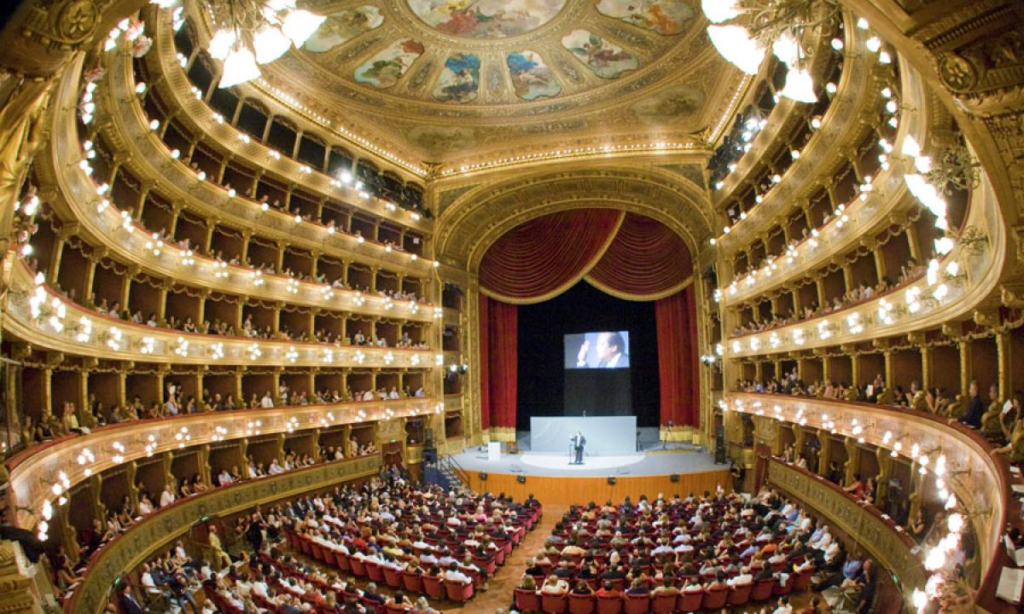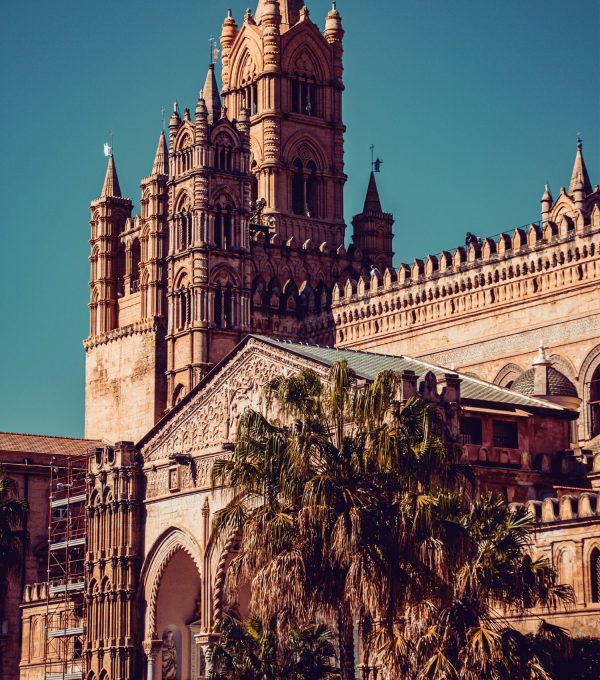Over a hundred years ago the notes of Giuseppe Verdi’s Falstaff opened the performances of the Teatro Massimo in Palermo. Symbol of the city and of the whole of Sicily, the theater is equipped with perfect acoustics, which built the myth, and is still the third largest opera house in Europe after the Paris Opera and the Vienna Staatsoper.
Its importance is undoubtedly linked to the perfect natural acoustics of the great hall, which allows you to listen from every position of the theater dialogues, music and singing, that the cultural offer that characterizes it. We discover the history and curiosities of this theatre conceived before the unification of Italy.

viaggioinsicilia
The history of the Massimo theatre in Palermo
The desire to provide the city of Palermo with a modern theatrical space was born before the unification of Italy, but its genesis was delayed by the Risorgimento and bureaucratic constraints. The Teatro Massimo was built in the second half of the 19th century. The first call for the construction of the theater is 1863, was won by the architect Giovan Battista Filippo Basile. The inauguration took place in 1897 with the opera by Verdi Falstaff.
With its 7730 square meters of area, the gloomy Massimo of Palermo is still the third largest in Europe. At the time of the inauguration the tickets had a cost of 80 lire for the second row stages and 3 lire for the gallery. During the first years of activity the theatre was entrusted to private companies until 1935 when, thanks to a ministerial decree, it was proclaimed an autonomous theatrical institution.
The Teatro Massimo in Palermo is located in the central Piazza Verdi and has become one of the symbols of the Sicilian city. It is a neoclassical building built in the late 1800s. Following a major renovation, the theatre was closed from 1974 to 1996.
Already from the outside the Massimo Theatre in Palermo fascinates, for its huge dome and the wonderful staircase on whose sides there are two bronze lions representing the Tragedy and the Opera.
The Massimo Theatre in Palermo is also easy to reach on foot. In fact it takes 15 minutes walk from the train station, the port and the Cathedral. The theatre is also within easy reach of the Capo market and its gastronomic delights.

rcsradio
Teatro Massimo di Palermo: curiosities
The Massimo theatre in Palermo brings with it curiosities and legends. The most famous story concerns the presence of the ghost of a nun buried near the then church of Sant’Agata, in fact the church dedicated to the saint and her cemetery were destroyed to make room for the theater.. Even today it is said that his ghost wanders through the corridors and stages of this wonderful theater.
A curious aspect is what concerns the Bellini stage that takes its name from the homonymous circle of the Palermo nobility, born in 1769. Today on stage there are autographed photos of the artists who performed on stage and those of the people who were part of the homonymous noble circle, one of the oldest in Europe.
Another interesting aspect concerns the Pompeian room with its frescoed ceilings and designed following an order referring to number 7 and its multiples. The echo effect increases as you approach the center of the room.
The Great Hall instead has the ceiling decorated with a symbolic wheel consisting of 11 paintings depicting the triumph of music. Today the Massimo theatre in Palermo has a flourishing program with operas, ballets, concerts, experimentation and any other form of performing arts. In addition to activities for children and students. The theater is also open both during the week and on weekends.
Copertina: Italia




